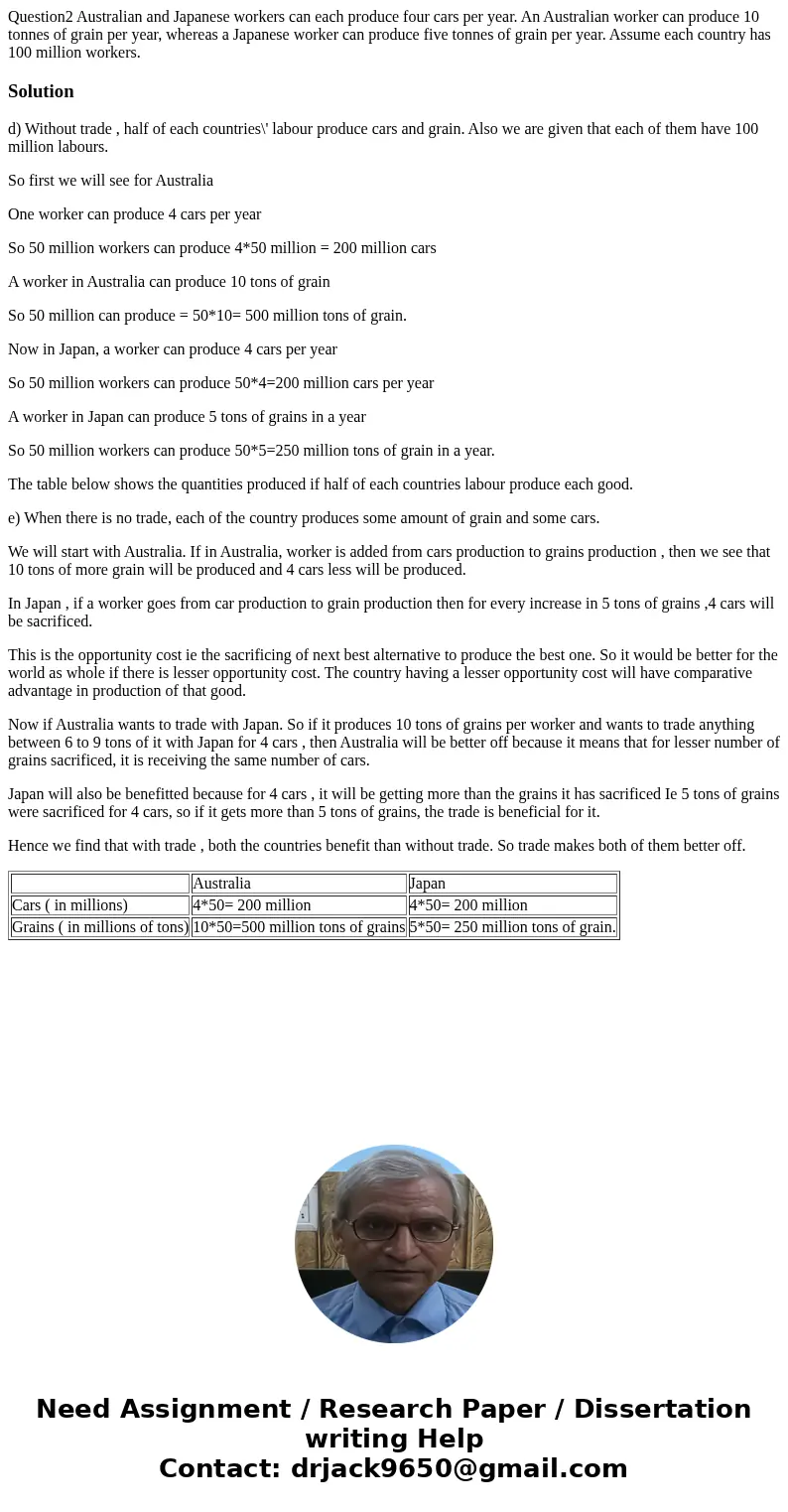Question2 Australian and Japanese workers can each produce f
Solution
d) Without trade , half of each countries\' labour produce cars and grain. Also we are given that each of them have 100 million labours.
So first we will see for Australia
One worker can produce 4 cars per year
So 50 million workers can produce 4*50 million = 200 million cars
A worker in Australia can produce 10 tons of grain
So 50 million can produce = 50*10= 500 million tons of grain.
Now in Japan, a worker can produce 4 cars per year
So 50 million workers can produce 50*4=200 million cars per year
A worker in Japan can produce 5 tons of grains in a year
So 50 million workers can produce 50*5=250 million tons of grain in a year.
The table below shows the quantities produced if half of each countries labour produce each good.
e) When there is no trade, each of the country produces some amount of grain and some cars.
We will start with Australia. If in Australia, worker is added from cars production to grains production , then we see that 10 tons of more grain will be produced and 4 cars less will be produced.
In Japan , if a worker goes from car production to grain production then for every increase in 5 tons of grains ,4 cars will be sacrificed.
This is the opportunity cost ie the sacrificing of next best alternative to produce the best one. So it would be better for the world as whole if there is lesser opportunity cost. The country having a lesser opportunity cost will have comparative advantage in production of that good.
Now if Australia wants to trade with Japan. So if it produces 10 tons of grains per worker and wants to trade anything between 6 to 9 tons of it with Japan for 4 cars , then Australia will be better off because it means that for lesser number of grains sacrificed, it is receiving the same number of cars.
Japan will also be benefitted because for 4 cars , it will be getting more than the grains it has sacrificed Ie 5 tons of grains were sacrificed for 4 cars, so if it gets more than 5 tons of grains, the trade is beneficial for it.
Hence we find that with trade , both the countries benefit than without trade. So trade makes both of them better off.
| Australia | Japan | |
| Cars ( in millions) | 4*50= 200 million | 4*50= 200 million |
| Grains ( in millions of tons) | 10*50=500 million tons of grains | 5*50= 250 million tons of grain. |

 Homework Sourse
Homework Sourse